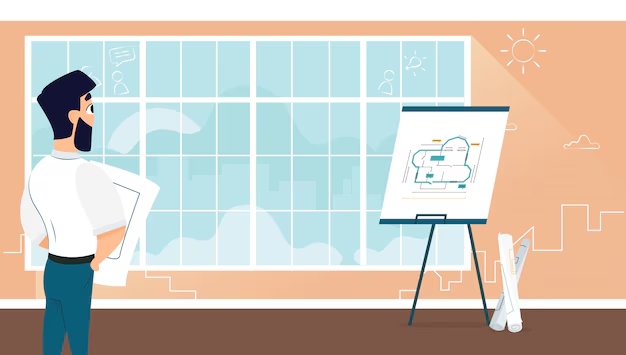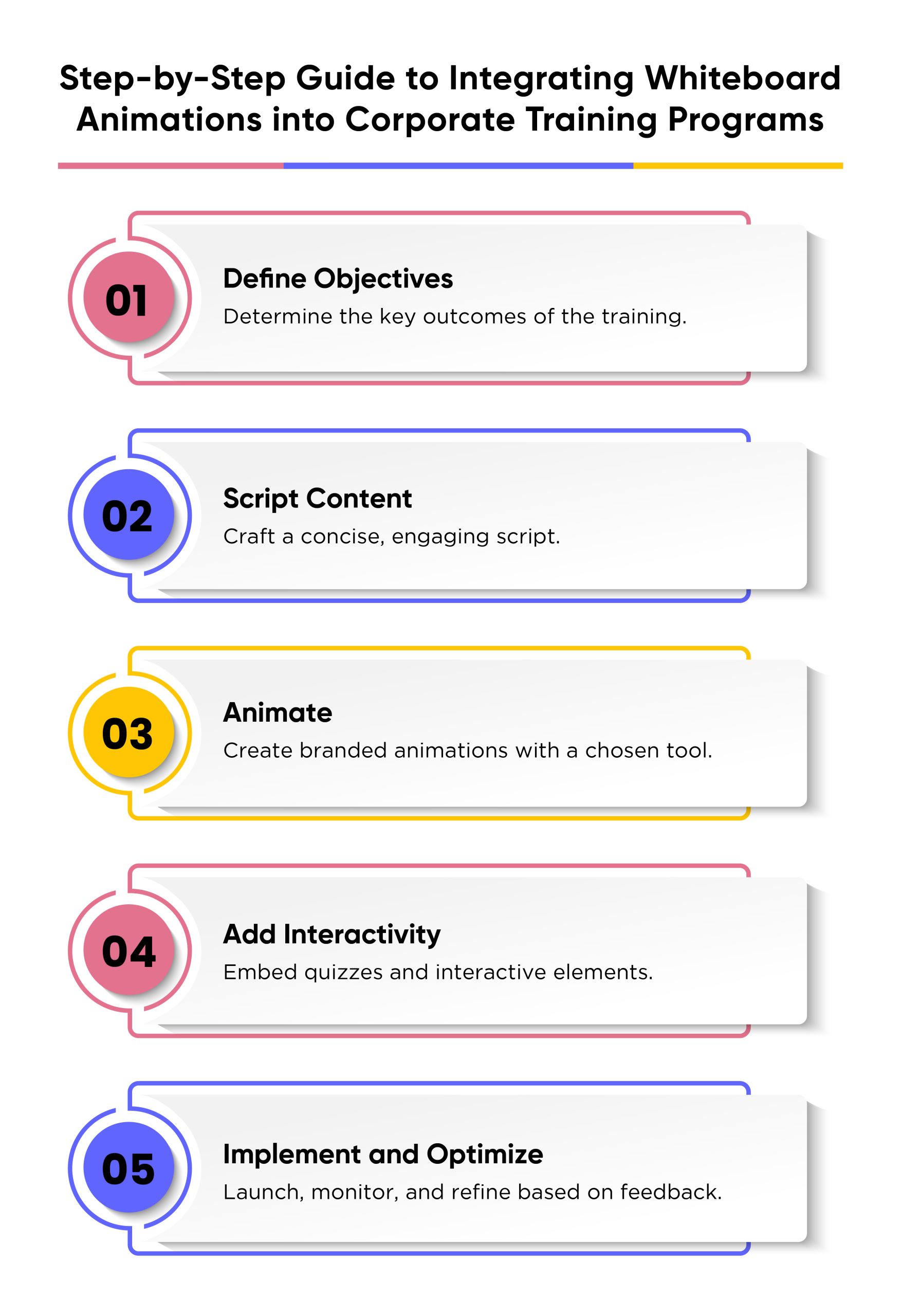Exploring the Impact of Educational Whiteboard Animation in US

Locating engaging and productive teaching resources in today’s vigorous educational climate is more important than ever. Whiteboard animation for education has become increasingly popular, especially in the US, as educators and content creators seek creative methods to improve learning experiences. In-depth analysis and helpful advice for educators, marketers, and content producers wishing to take advantage of this dynamic medium are provided in this piece, which explores the market for educational whiteboard animation in US.
What is Educational Whiteboard Animation?
Educational whiteboard animation involves creating drawn, animated videos to explain concepts, narrate stories, or provide instructions in a visually engaging manner. This technique captures the essence of classroom teaching by copying the real-time drawing of illustrations and text, making complex ideas more accessible and enjoyable to digest.
Why Use Whiteboard Animation in Education?
- Engagement: These animations grab and hold the viewer’s attention more effectively than traditional teaching methods or standard video lectures.
- Retention: Visual storytelling aids in better information retention by simplifying complex subjects through engaging visuals and narratives.
- Accessibility: Whiteboard animations can be accessed anytime and anywhere, making learning flexible and accessible to a broader audience.
- Versatility: They can be used across various educational levels and subjects, from K-12 to higher education and corporate training.
Implementing Whiteboard Animation in Educational Strategies
Incorporating whiteboard animations into educational strategies requires careful planning and creativity. You can maximize its potential in the following ways:
Start with a Solid Script
- Objective: Define what you want to achieve with your animation.
- Audience: Understand who your viewers are and what they need.
- Key Messages: Identify the core messages you need to convey and structure them effectively.
Focus on Visual Design
- Simplicity is Key: Avoid cluttered visuals that can overwhelm viewers.
- Consistency: Use consistent colors and styles to create a coherent visual experience.
- Emotion: Include emotional elements to connect with the audience personally.
Choose the Right Tools and Platforms
- Software: Select user-friendly animation software that meets your budget and skill level.
- Hosting: Choose platforms where your target audience will most likely engage with your content.
Measure Effectiveness
- Feedback: Gather viewer feedback to understand the impact of your animations.
- Analytics: Use video analytics to track engagement and learning outcomes.
Educational Whiteboard Animation in Action: A Look at US Trends
In the US, educational institutions and companies are increasingly adopting whiteboard animations due to their effectiveness in communication and learning. Here are some current trends:
- Rise in Remote Learning: With increased online education, educators turn to animated videos to replicate the classroom experience.
- Corporate Training: Businesses use animations to train employees more engagingly and memorably.
- Marketing for Education: Institutions use whiteboard animations to market their courses and programs to prospective students.
| Trend | Description | Impact |
| Interactive Learning | Integrating quizzes and interactive elements in animations. | Increases engagement |
| Microlearning | Short, focused animations for quick learning sessions. | Enhances retention |
| Storytelling | Using narratives to explain concepts. | Boosts comprehension |
Practical Tips for Creating Compelling Educational Animations
- Keep it Short and Sweet: Aim for animations that are between 2-5 minutes.
- Use a Professional Voiceover: A precise and professional narration enhances the understanding.
- Incorporate Humor: Light humor can make learning more enjoyable.

Tips for Promoting and Distributing Educational Whiteboard Animations
Once you’ve created an educational whiteboard animation, the next step is to ensure it reaches and engages your target audience effectively. Promoting and distributing your video content strategically can significantly enhance its visibility and impact. Here are some essential tips to help you maximize the reach of your educational animations:
Utilize Social Media Platforms
- Target Specific Platforms: Share your animations on platforms where your target audience is most active. This might be Facebook, Twitter, and Instagram for educators and students. LinkedIn can be effective for reaching professionals for corporate training videos.
- Create Engaging Posts: Use captivating captions, hashtags, and calls to action that encourage sharing and discussion. Posts that engage viewers tend to perform better in social media algorithms, increasing visibility.
Leverage Educational Forums and Websites
- Share on Educational Platforms: Websites like Teachers Pay Teachers or educational forums such as Edmodo provide a space for educators actively looking for resources. Sharing your animations on these platforms can connect you with an engaged educational community.
- Contribute to Blogs and Articles: Writing articles or guest posts on popular educational blogs can help promote your animations. Include embedded videos or links to your whiteboard animations to drive traffic.
Email Marketing
- Educational Newsletters: Include your whiteboard animations in newsletters sent to subscribers. Whether it’s a regular update from an educational institution or a periodic dispatch from a corporate training department, videos can make these communications more engaging.
- Direct Emails: Send out emails focusing on the animation, providing a brief description and a link to the video. This direct approach can effectively reach individuals interested in your educational offerings.
Optimize for SEO
- Keywords and Metadata: Ensure your video title, description, and tags are optimized with relevant keywords, such as “educational whiteboard animation” or “animated educational videos.” This optimization helps appear in search results on Google and video hosting platforms like YouTube.
- Transcripts and Captions: Include transcripts of your animations and use captions. These not only make your content accessible to a broader audience, including those with hearing impairments, but also feed into SEO practices by providing more text for indexing.
Collaborate with Influencers and Educators
- Partnerships: Partner with educators, tutors, and influencers who can feature your animations in their digital content. Their endorsement can lend credibility and extend the reach of your videos.
- Webinars and Online Workshops: Use animations as part of webinars or workshops. This showcases the animation to attendees and integrates it into a broader educational context, enhancing its utility and appeal.
Conclusion of Educational Whiteboard Animation in US
Educational whiteboard animation in US is revolutionizing the way we teach and learn. By combining simplicity, engagement, and educational efficacy, animated educational videos provide an essential tool in the educational arsenal of teachers and marketers alike. Whether explaining a difficult concept or marketing an educational program, whiteboard animations can give you the edge you need to succeed. Explore this innovative approach today and see the difference it can make in your educational enterprises.
FAQs
Q 1: What makes whiteboard animation effective for learning?
Combining audio and visual presentation in whiteboard animations enhances memory retention and keeps learners engaged.
Q 2: How costly is it to produce a whiteboard animation video?
Costs can vary based on the length and complexity of the project and whether professional voiceovers or custom illustrations are used. Generally, it is a cost-effective method compared to traditional video production.
Q 3: Can whiteboard animations be interactive?
Yes, many platforms now allow the integration of interactive elements such as clickable links or quizzes.
Q 4: Are there specific tools recommended for creating educational animations?
Tools like Doodly, VideoScribe, and Vyond are famous for their ease of use and range of features tailored to creating whiteboard animation video marketing.
Q 5: How do I measure the success of my educational animation?
Success can be measured by engagement rates, completion rates, learner feedback, and pre-and post-tests to assess knowledge gain.










